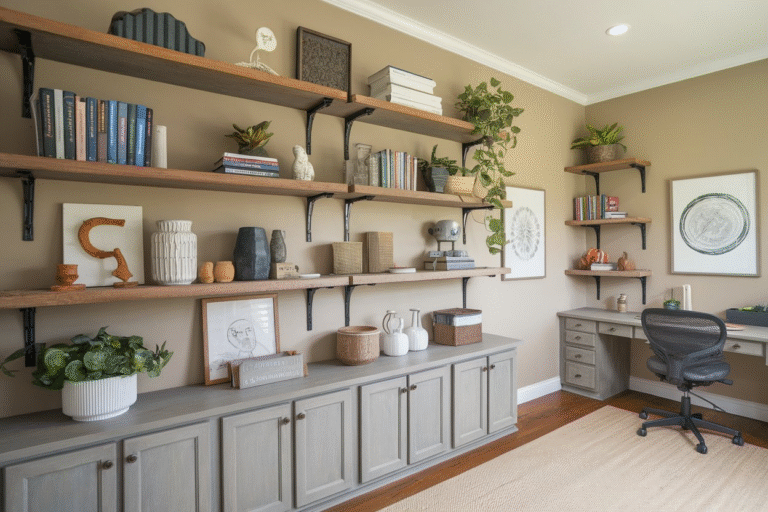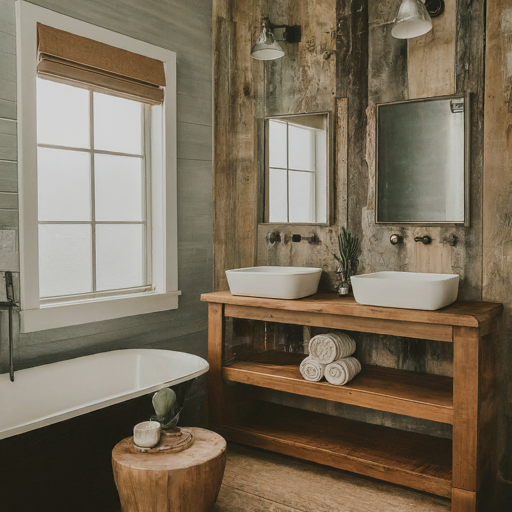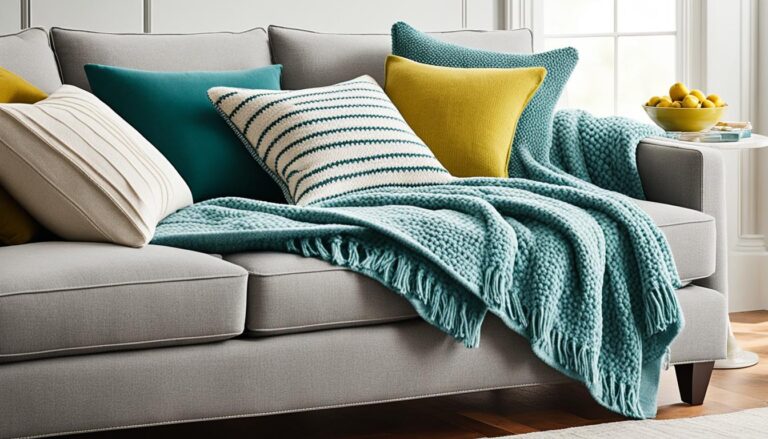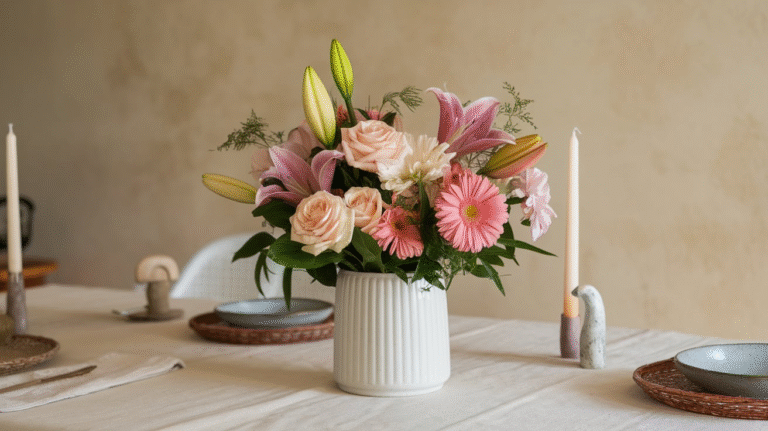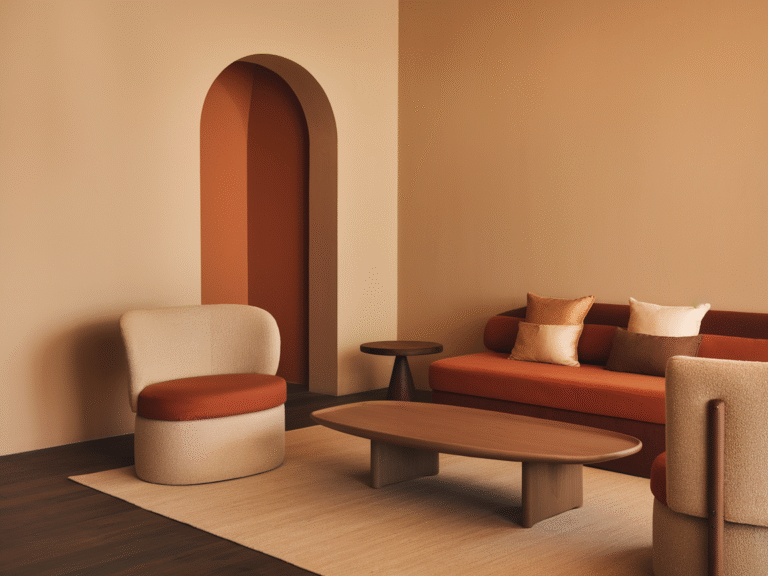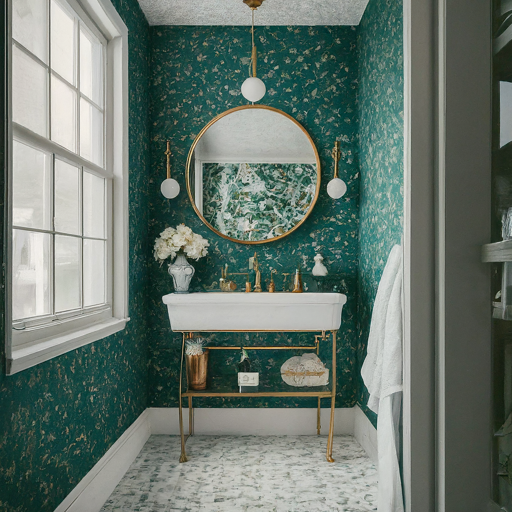24 Home Office for Two People Ideas
Creating a home office for two people can feel like trying to fit two heads into one helmet — tricky but totally doable with the right approach.
Whether you and your partner, sibling, or roommate need to share the same space or you’re designing a spot for your kids to study together, balancing functionality, style, and harmony is key.
Why Design a Home Office for Two?
Sharing an office at home isn’t just about squeezing two desks in the same room. It’s about creating a workspace that respects both personalities and work styles, fostering collaboration without sacrificing focus. With more people working remotely or studying from home, having a tailored setup for two is essential for:
- Maximizing space efficiency
- Encouraging teamwork and communication
- Providing individual privacy when needed
- Reducing distractions with clever layouts
Now, let’s explore 24 inspiring and practical ideas for designing a home office that works perfectly for two people.
1. Dual Desk Setup with a Shared Center Console
Imagine sitting side by side, yet having a shared central console or storage unit between you. This acts like the “neutral zone” where you keep shared office supplies, charging stations, or printers. Each desk on either side has enough personal space but benefits from the central hub. This layout keeps things organized and fosters cooperation without invading personal zones.
2. Facing Desks for Enhanced Collaboration
If you want to spark creativity or frequently collaborate, place two desks facing each other. It’s like looking across the battlefield at your partner in crime. To keep things smooth, use desk dividers or plants that can act as visual buffers when focus is required. This arrangement makes communication seamless and turns your home office into a dynamic workshop.
3. L-Shaped Desk for Two
An L-shaped desk is the ultimate multitasker’s dream, especially when shared by two. One person can take the longer side; the other claims the shorter side. This setup naturally divides the space but keeps you close enough for quick chats or brainstorming sessions. Plus, it offers plenty of surface area for spreading out papers, monitors, or your favorite coffee mug.
4. Wall-Mounted Fold-Down Desks
Tight on space? A pair of fold-down desks mounted on the wall can be a lifesaver. When work is done, just fold them away like secret panels in a mystery novel. This is perfect for small rooms or multi-use areas like living rooms or guest rooms. Add some sleek floating shelves above for your files and office essentials.
5. Shared Standing Desk with Adjustable Heights
Ergonomics matter, and when two people share a desk, one size rarely fits all. Enter the adjustable standing desk — a shared desk that changes height at the push of a button. You can take turns standing or sitting, catering to individual comfort. This not only promotes better posture but keeps the energy flowing during long work sessions.
6. Incorporate Privacy Screens
Sometimes, even the best partnerships need a little privacy. If your home office doubles as a living space or if you’re dealing with very different work styles, adding privacy screens or room dividers can create separate zones. Choose materials that allow light through but block distractions. It’s like having your own little office nook within a shared room.
7. Color Coding Zones for Personalization
To avoid the “whose stuff is whose” chaos, try color-coding your work zones. Pick different colors for each person’s desk accessories, chair cushions, or file folders. This subtle touch personalizes the space without overwhelming the room’s style. Plus, it’s a handy visual cue for keeping track of your own things.
8. Double Desk with Shared Overhead Storage
Vertical space is often overlooked. Install shared overhead cabinets or shelves that span across both desks. This keeps the floor clutter-free and provides ample storage for documents, books, and office gear. Label each section to keep things orderly and make sure everyone has their own dedicated storage.
9. Utilize Corner Spaces Creatively
Corners can be awkward, but they’re also precious real estate in small home offices. A corner desk designed for two with staggered seating can create a cozy yet functional setup. One person sits facing the window, the other facing the wall or room. This asymmetry keeps distractions low and maximizes space.
10. Cable Management Solutions
Nothing kills the vibe faster than a jungle of cords underfoot. Invest in cable trays, clips, and sleeves that run under or behind desks, bundling wires neatly. For two people, color-coded cables can also help avoid confusion. Keeping cables tidy is like giving your workspace a clean haircut — instantly refreshing.
11. Matching Desk Chairs with Individual Comfort
While matching desk chairs maintain visual harmony, remember that comfort is king. Choose ergonomic chairs that support your backs and adjust individually to each person’s needs. If you’re anything like me, spending hours at a desk demands a chair that feels like a supportive friend rather than a medieval torture device.
12. Add Task Lighting for Each Workstation
Lighting can make or break focus. Install individual task lamps or adjustable LED lights for each desk. This way, one person can have bright, focused light while the other prefers a softer glow. Lighting control is a subtle power move that helps both people work comfortably side by side.
13. Dual Monitor Setup with Monitor Arms
If you and your office buddy both juggle multiple screens, a dual monitor setup with flexible arms is a game changer. These arms save desk space and allow you to adjust the angle and height of each screen. It’s like giving each monitor its own stage, so both of you can perform your best without feeling cramped.
14. Shared Inspiration Board or Wall
Bring some personality into the shared space with a shared inspiration board. Whether it’s a corkboard, whiteboard, or magnetic wall, you can pin reminders, motivational quotes, or creative ideas side by side. It’s a visual meeting place that keeps your goals aligned and sparks spontaneous brainstorming.
15. Storage Solutions for Two
Office clutter can become a territorial battle. Prevent this with plenty of personalized storage bins, drawers, or rolling carts. Label everything clearly and encourage tidying routines. Storage is like a good referee — it keeps order and fairness in a shared workspace.
16. Use Rugs to Define Separate Areas
If you’re working in an open room, placing different area rugs under each desk can visually separate spaces. Rugs add warmth and reduce noise, making the shared office feel more like a collection of cozy islands rather than one big, overwhelming desk ocean.
17. Keep a Communal Charging Station
No one likes hunting for a charger. A communal charging station with multiple USB ports and outlets keeps all devices powered and within reach. This eliminates cord wars and ensures both of you stay charged and connected throughout the day.
18. Add Plants for a Shared Breath of Fresh Air
Plants aren’t just decoration; they improve air quality and reduce stress. Pick low-maintenance plants that can live happily in your office light conditions. A few well-placed plants can soften the space and give both desks a shared sense of calm and vitality.
19. Soundproofing Tips for Two-Person Offices
Working close to someone can mean distractions. Consider soundproofing solutions like acoustic panels, rugs, or noise-canceling headphones. If one person is on calls while the other needs quiet concentration, these little sound barriers work wonders for maintaining peace and productivity.
20. Flexible Furniture for Changing Needs
Your home office should be able to adapt as your work styles evolve. Consider desks and storage that can be moved or reconfigured easily. Folding chairs, rolling carts, and modular desks give you the flexibility to switch things up whenever you want without a major overhaul.
21. Personal Touches Without Clutter
Personalizing your workspace is important but keep it intentional. A couple of favorite photos, a unique mug, or a meaningful trinket can make your desk feel like your own without crowding the space. Encourage each person to keep their personal items tidy and within their zone.
22. Create a Charging and Tech Zone
To prevent tech from invading your desktop real estate, set up a dedicated tech zone with a charging station, printer, and other peripherals. This keeps your desks clearer and the tech easy to access for both users.
23. Smart Desk Accessories for Two
Invest in smart desk accessories like wireless chargers, cable organizers, or desk organizers with compartments for both people. These tools streamline your daily routine and reduce friction in a shared space, letting you focus on work, not clutter.
24. Establish Shared Office Etiquette
Beyond the physical space, a smooth home office for two thrives on clear communication and shared rules. Decide on noise levels, break times, and how to handle visitors or calls. A simple agreement can prevent misunderstandings and keep the shared office peaceful and productive.
Final Thoughts: Designing a Home Office for Two is a Team Effort
Designing a home office for two is a bit like choreographing a dance — you need balance, space, and moments where you step together or apart. By considering personal needs, space constraints, and shared workflows, you can build a workspace that feels both personal and collaborative. The ideas above aren’t just theory; they’re tried-and-true tactics that have transformed chaotic shared offices into harmonious productivity zones.
I encourage you to pick the ideas that resonate most and tweak them to your unique dynamic. After all, the best home office is the one where both of you feel energized, comfortable, and ready to tackle whatever the workday throws at you.

